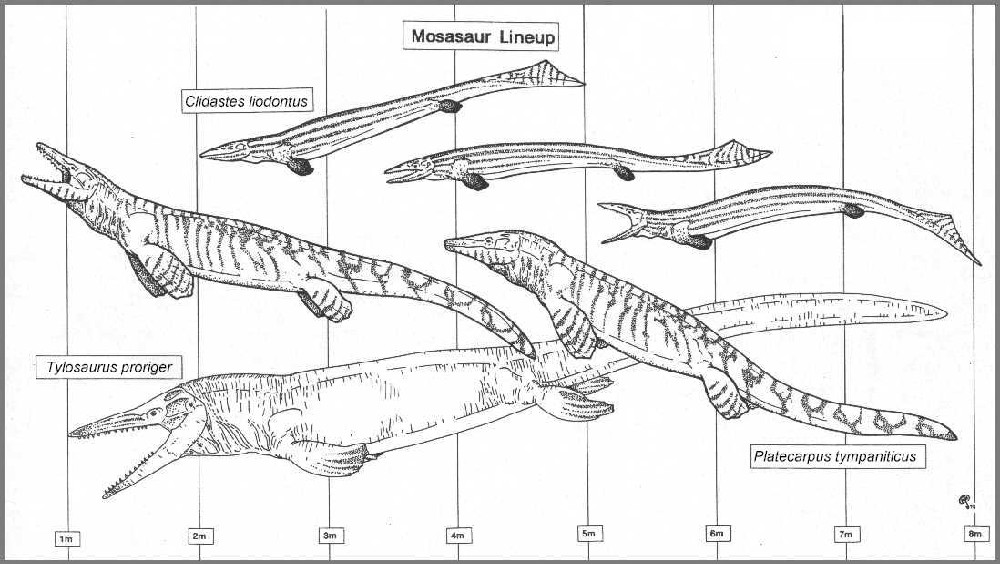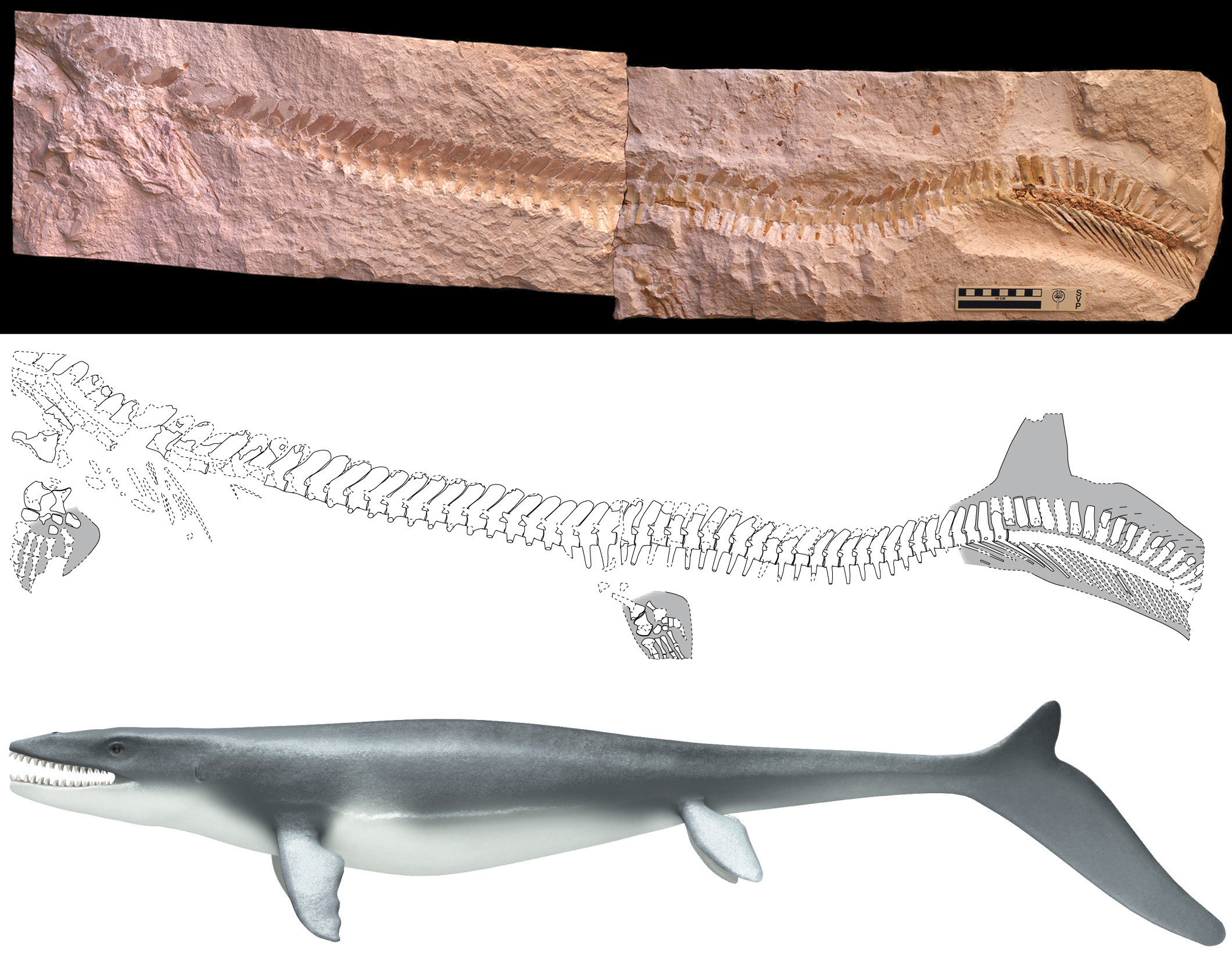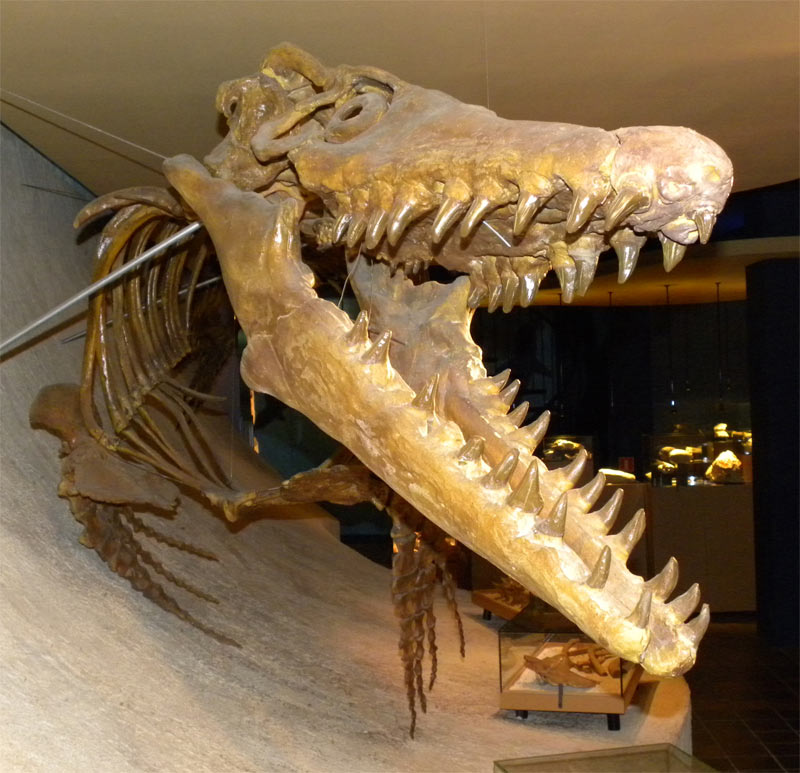T-Rex of the Seas: A Mosasaur Gallery
Tylosaurus Skeleton

This mosasaur skeleton, belonged to Tylosaurus proriger, measures about 29 feet long and is on display at Sternberg Museum of Natural History in Kansas. Tylosaurs lived about 88 to 78 million years ago, could grow to lengths of 49 feet (15 meters) or more. Their fossils have been found worldwide, including in Antarctica, according to Mike Everhart, adjunct curator of paleontology at the Sternberg Museum of Natural History in Hays, Kansas.
Gone with the Dinosaurs

The skull of a reconstructed 30-foot long, 75-million year old skeleton of Mosasaurus conodon located at the Museum of Geology at the South Dakota School of Mines and Technology. Mosaurus died out with the dinosaurs, and are related to monitor lizards, including the Komodo dragon.
In a Wetter World

7) A skull from the mosasaur Platecarpus, a mosasaur that inhabited the Western Interior Sea, an inland sea that split North America in half during the mid and late Cretaceous Period. Museums now hold hundreds of specimens, mostly fragmentary.
Feet to Flippers

5) A fossilized left fore-paddle of the mosasaur Clidastes propython in the University of Kansas Museum of Natural History's collection. As mosasaurs adapted to marine life, the extremities that were once feet gained bones called phalanges and became paddles.
Mosasaur Line-Up

4) Depictions of the three most common mosasaurs from the Smoky Hill Chalk deposit left by a giant inland sea that covered what is now the Midwest during the middle and late Cretaceous. Scientists don't agree on how mosasaurs looked. The author of a recent study, paleontologist Johan Lindgren, argues that rather than having long, serpentine bodies and flat tails, as depicted above, mosasaurs became more fish- or dolphin-like, with two-lobed tails.
Sharklike swimmer

A 6.5-foot-long (2 meter), 70-million-year-old juvenile mosasaur fossil unearthed in Jordan. The fossil contained imprints of a sharklike tail fin, confirming Lindgren's hypothesis that later-stage mosasaurs evolved tails to swim better in the deep ocean.
A Historic Discovery

9) A line drawing of the mosasaur Platecarpus coryphaeus made by Samuel W. Williston and published in 1898 as part of Volume IV of the University Geological Survey of Kansas. The first mosasaur was discovered in the late 18th century, before the first dinosaur.
Get the world’s most fascinating discoveries delivered straight to your inbox.
Mosasaurus skeleton

The first mosasaur was discovered in the 18th century. Scientists are now studying how their bodies changed as they adapted to swimming in the open ocean and became top marine predators. (Shown here: a mosasaurus skeleton at the Maastricht Natural History Museum, The Netherlands.)



